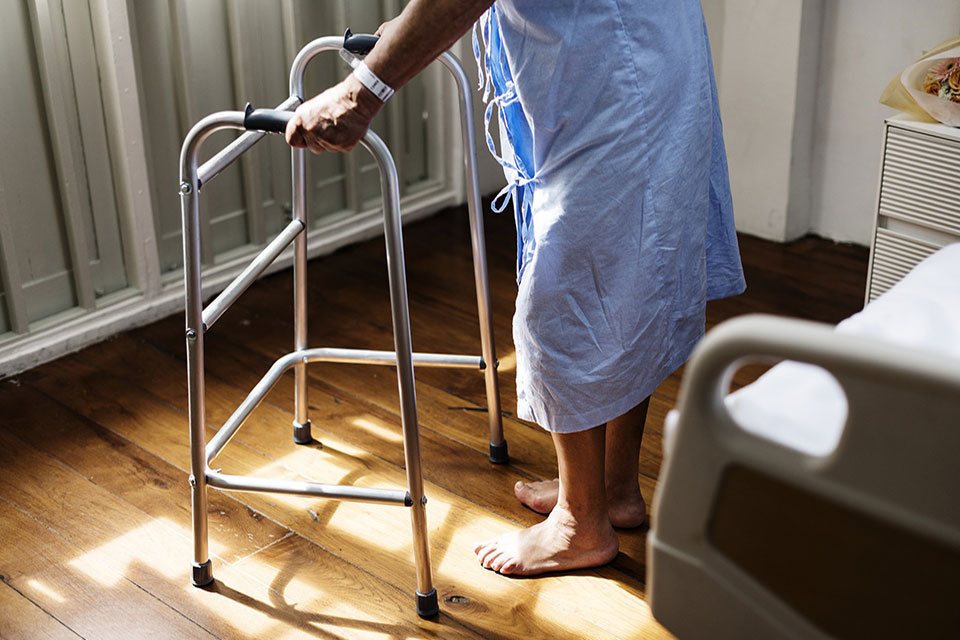ASK A PHARMACIST: MEDICATIONS AND FALLS
Written By: Malissa Carroll, Web Content Specialist
According to the Centers for Disease Control and Prevention (CDC), falls are the leading cause of death associated with injuries among older adults in the United States. In fact, more than two million older adults are treated in emergency departments for fall-related injuries each year. Although research has shown that certain medications can contribute to an increased risk of falls in older adults, older adults and their caregivers may be able to reduce this risk by working with their pharmacist or health care provider to evaluate their medications.
Pharmacists and students from the Peter Lamy Center on Drug Therapy and Aging have been actively involved in medication reviews to evaluate for fall-risk increasing drugs among older adults, as well as numerous educational programs to help combat this public health issue. Members of this team — Daniel Mansour, PharmD, BCGP, FASCP, interprofessional clinical coordinator for the Lamy Center, and Lisa Huang, PharmD, MPH, pharmacy intern with the Lamy Center, under the leadership of Nicole Brandt PharmD, MBA, BCPP, BCGP, FASCP, executive director of the Lamy Center and professor in the Department of Pharmacy Practice and Science (PPS) at the School of Pharmacy — answer some frequently asked questions about medications linked to falls below, and offer tips to help older adults ensure that they are using their medications safely and appropriately.
How can medications contribute to the risk of falling?
Some medications have side effects that can increase falls. These medications are collectively known as fall-risk increasing drugs (FRIDs), and are deemed as potentially inappropriate for older adults by the American Geriatrics Society. Some side effects include, but are not limited to:
- Drop in blood pressure when standing (orthostatic hypotension)
- Blurred vision
- Dizziness
- Sedation
- Decreased reaction time
- Worsening memory
All of these side effects are associated with an increased risk of falling. In addition, it is not only important to look at the types of medications, but also the number and doses, which can also increase the risk of falling.
Who is most at-risk of suffering a medication-related fall?
Medications work differently in different age groups. Older adults are more sensitive to medication side effects in part due to differences in age and disease related changes. For instance, if an older adult is frail or has been sedentary for an extended time, he or she is at a greater risk for falling.
What types of medications put older adults at the greatest risk for falls?
Older adults with a long list of medications, also known as polypharmacy/polymedicine, can be a starting point to evaluate for increased falls risk; however, the medication list should be examined in the context of a health care provider’s assessment and the patient’s treatment goals. According to the CDC, certain medication classes can also place older adults at a greater risk for falls, such as:
- Anticonvulsants
- Antidepressants
- Antipsychotics
- Benzodiazepines
- Opioids
- Sedatives-hypnotics
- Anticholinergics
- Medications affecting blood pressure
- Antihistamines
- Muscle relaxants
How can pharmacists help older adults reduce their risk of medication-related falls?
Pharmacists are great resources for patients. Pharmacists work in settings that are easily accessible to many older adults and can provide helpful insights into fall prevention. Pharmacists can explain and counsel on the side effects of medications and how they can affect the body, and devise a medication action plan to assist the older adult. For example, some commonly prescribed drugs can cause drowsiness, blurred vision, syncope (fainting), or impaired motor functioning, which increases the risk of falling. With the patient’s consent, the pharmacist can communicate with the prescriber to STOP medications when possible, SWITCH to safer alternatives, or REDUCE medications to the lowest effective dose.
Additionally, pharmacists can work with other members of the patient’s health care team, including the nurse, physical therapist, or caretakers, to provide helpful advice on how to decrease the risk of falling through simple lifestyle modifications. For example, pharmacists can recommend older adults get their vision checked by an optometrist or talk to their caretakers about modifications that can be made in the home so that falls are less likely to occur.
What can older adults do if they have been prescribed a medication known to increase their risk for falls?
If an older adult is prescribed a medication known to increase their risk for falls, he or she should ask the prescriber about whether the medication’s benefits outweigh its risks, as well as if there are safer alternatives available. Older adults and their caregivers can also download the helpful brochure, “Did You Remember to Ask,” on the Lamy Center’s website to learn more.
What advice or tips can you give older adults to help ensure that they use their medications safely?
One important tip for older adults is to take medications as prescribed by your health care provider. Additionally, keep a medication list with the name of the medicine, how you take it, and why you take it, so you can review it with your health care team regularly. Your health care team, including your pharmacist, can explain drug interactions, side effects, and how the medications can affect each other in your body. You can learn more by reviewing the brochure “Safe Medicine Use: A Guide for Older Adults and Caregivers,” on the Lamy Center’s website.

